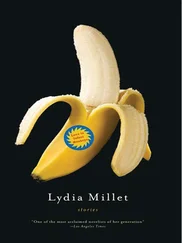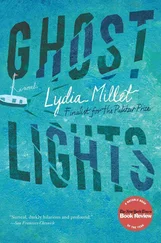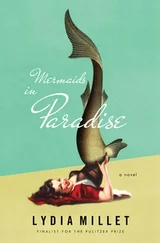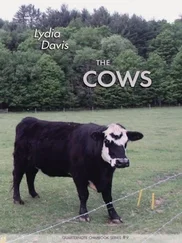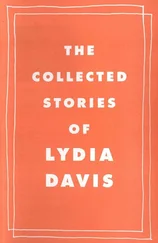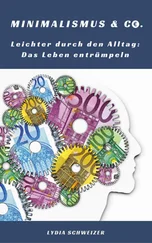But in the other bedrooms the collections stayed where they were, in their quaint geographic compartments. She told herself that even the Natural History Museum in New York, even the British Museum in London, whose floor plans she had photocopied, displayed a less than symmetrical arrangement.
When the project was finished the house had a globe-like aspect in its sectioning off, its variety of scenes, its separation by palette. It was multicolored like a globe, and also like a globe it represented reality only partly, with the failure of all maps but also the same neatness, the same quiet satisfaction. The Himalayas and the Arctic were cold rooms, light-blue and gray-white; the tropics were emerald green, with the bright splashes of toucans and macaws, the savannahs yellow and gold, and in two of the rooms there were sunsets, pink and mauve.
She had loved austere institutions, as a child — old churches, universities, art galleries, museums. She’d cherished the high ceilings, the deep walls, the wide doorways. Now she thought she had also liked what she hadn’t recognized back then: an air of permanence and contentment, the happy captivity of precious things.

Jim the lawyer had an attitude of indulgence when it came to her interest in preservation. It was the kind of indulgence you would rarely find in a spouse, she thought — the benevolence of a third party with little stake in the matter, someone whose agreement was not required and therefore not contentious.
It wasn’t only the taxidermy; there were trees in the garden that were historic, which the state declared it was illegal to cut down. She learned the names of all these trees and tried to find out about them, and then the trees gave her an idea for the house, for how to keep it the way it was. It had never been put up for historic status but it could be, it might well qualify if she pursued that course. . and she decided she would, in case the cousins won their suit, in case the place passed out of her hands. She’d try for state landmark status, Criterion 3: Embodies the distinctive characteristics of a type, period, region or method of construction or represents the work of a master . She’d need to hire an architect to evaluate the place — she thought it would qualify as an example of California Mediterranean, like Pasadena City Hall — but first she needed the records.
So on a Thursday morning she drove down to the permit center to pull the old building plans. She filled in forms, waited in lines, paid fees for duplication and processing, and at the end of a dreary morning was handed some rolled-up plans. On her way across the parking lot she unrolled one of them: an architect’s drawings of additions to the main building made in 1928—outbuildings, a shed near the pool. There was a greenhouse, she saw, which sadly had since vanished. Sitting in her car with the curls of paper spilling off her lap, she found, to her annoyance, that there were no plans of the original construction in all of it. There was a drawing of a garage renovation done in 1950, a 1954 repair of the dome, and an old schematic she didn’t pretend to understand. But there was no drawing of the building in its entirety.
There was the name of an architecture firm on the 1928 drawings, though, a firm that had been absorbed by another one and moved from Pasadena to Westwood. She made an appointment to consult with an architect there.

Coming into the office one morning — the new, small office in Culver City to which T. had downsized — she found a message on the answering machine.
They’d gone away for a while, said T.’s calm voice. While they were gone, it would mean a lot if she could look in on Angela every so often.
“You’ve got to be kidding,” she said aloud in the empty, airless room. It was still full of unopened white boxes of files, stacked into crooked towers that stood around awkwardly. The venetian blinds were angled open slightly so that, standing beside the desk, her finger on the rewind button, she registered the dark masses of cars flicking past.
She wished Casey had told her.
The message didn’t say where they’d gone or when they planned to come back. T. had left a few jotted instructions about the business on a legal pad, but that was it.
“I can’t believe this,” she muttered.
The only people she saw for the rest of the day were a FedEx man, a guy selling copiers, and, when she went out to move her car around midday, a woman walking a dog.
•
Still, a few days later she did as they’d asked. She set it up so that Jim could come with her — made a late reservation for dinner on Abbot Kinney and scheduled the visit to Angela between that reservation and an early date at a bar. The trip would seem less dutiful then; they could stroll over from the bar half-drunk, in the moist sea air of early evening, and be garrulous the way drinks let you be. Angela wouldn’t mind. She wouldn’t know the difference.
She met them at the door in what appeared to be a kimono, orange and satiny with stylized white birds. They stepped over the threshold shaking hands and smiling. Behind the counter that divided the kitchen from the living room, setting crackers onto a tray, Susan saw the live-in helper, formerly of Bosnia-Herzegovina, whose name she always forgot.
“Vera,” said the woman, without being asked.
“Of course, of course,” said Susan to Vera, apologetic. “Hello. Susan. And this is Jim. He also works with T.”
“A criminal, like my son,” said Angela smoothly. She turned to a small wine rack with flourishes of grape leaves and began looking at bottles distractedly.
“I’m sorry?” said Jim.
“It’s one of those days,” said Vera, rolling her eyes.
Her English had improved, thought Susan, since she first started with Angela.
“Yes, my son is a criminal,” said Angela, with a measure of pride. “A criminal mastermind. Would you like white? Or red?”
“Oh, whatever you’re having,” said Susan quickly, and stole a sidelong glance at Jim. He was gazing at Angela and grinning faintly.
“Look,” said Angela, smiling delightedly, and lifted one of the bottles by the neck. “A Zinfandel. A Zinfandel is cheap and stinks like shit.”
“Oh!” said Susan. “Yes?”
“I never heard that said,” said Jim.
A look of sadness crossed Angela’s face and she shrugged regretfully. “I love it very much,” she said.
She turned her back, wine in hand. They followed her into the kitchen, where Vera handed them a tray with olives and pickles on it. Jim took a pickle.
“Often they blame it on the parents,” went on Angela, as she rummaged in a drawer. They stood back, spearing olives and biding their time. “The worst criminals are often caused by neglect. There was a television show. .”
“Oh, but not in T.’s case,” said Susan.
“I’m sure, not with him,” agreed Jim.
“Really?” asked Angela. “But you’re a criminal too, aren’t you?”
“Some would say,” agreed Jim gravely, and inclined his head.
“I’ve heard of those,” mused Angela. “A criminal lawyer.”
They stood beside each other and watched as she struggled to open the bottle—“May I?” asked Jim — but Vera was already taking over.
“You would know better than I would,” said Angela, and turned from Vera to take a dish towel out of a drawer. It was cheerfully patterned with strawberries; she swabbed it up and down her arms as though cleaning or drying them. “So you tell me. Did they neglect you too? Was that why you did it?”
Читать дальше




